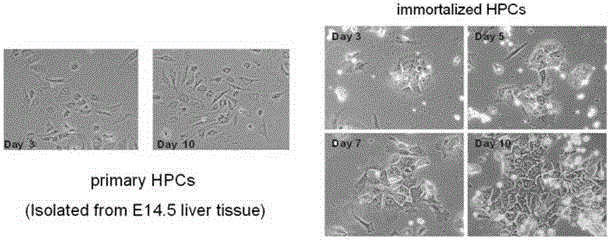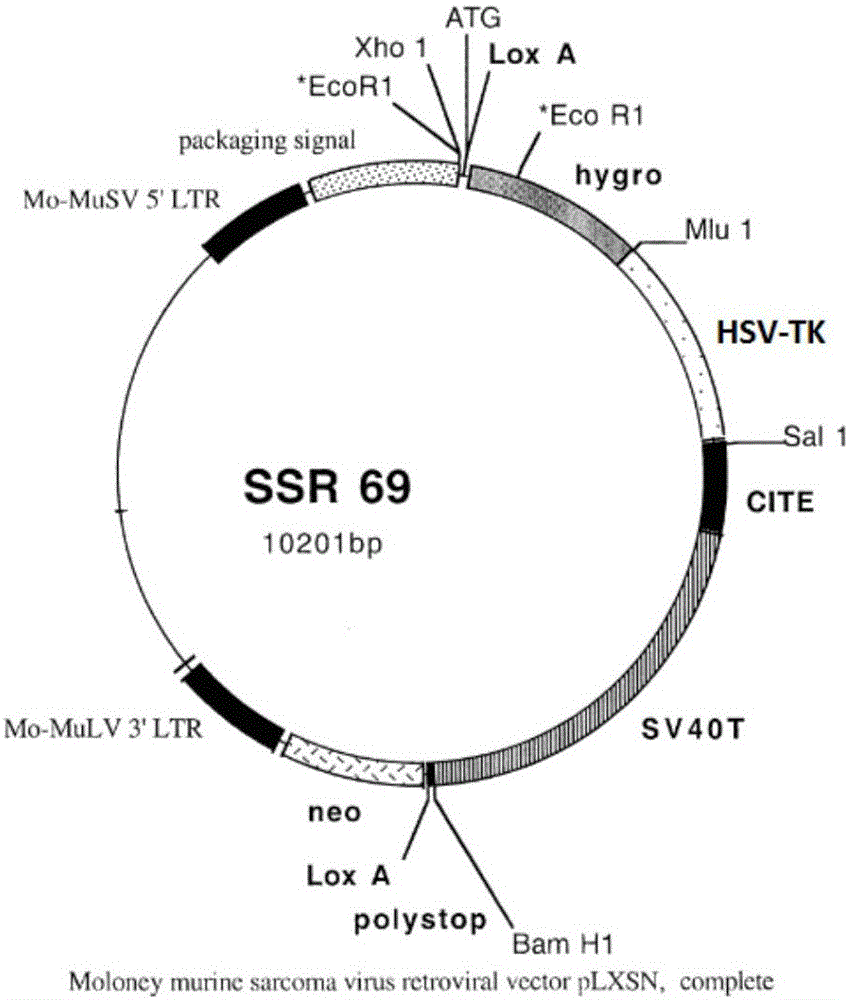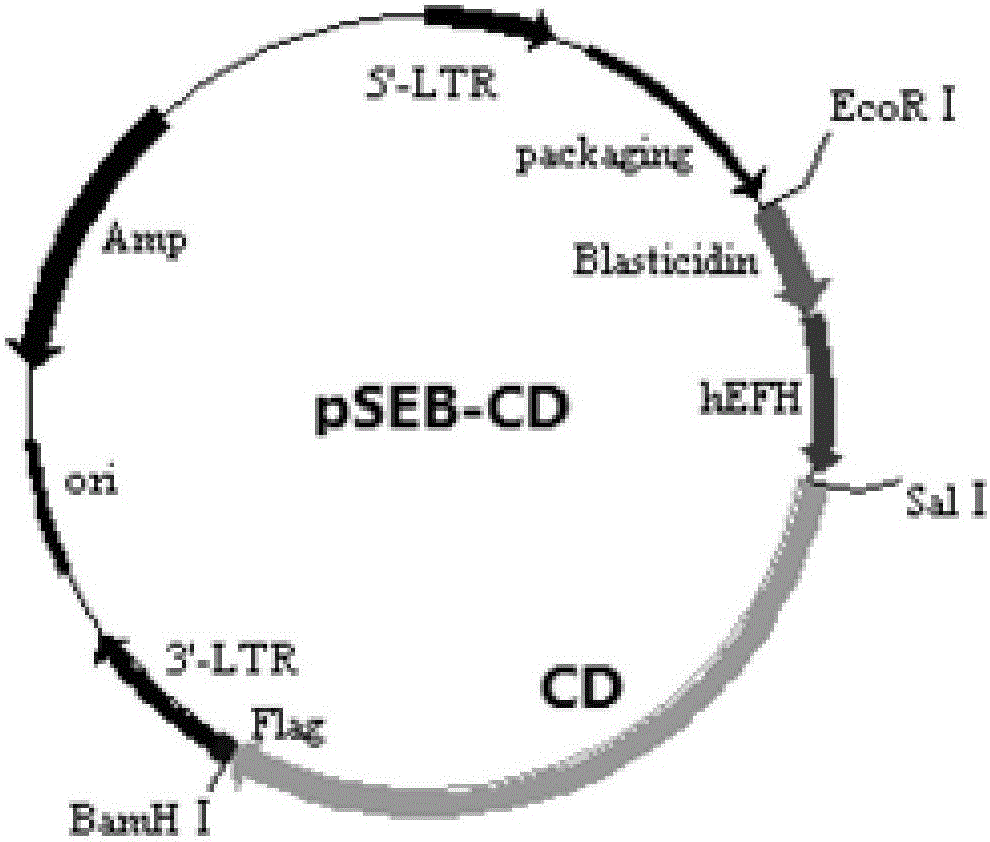A reversible immortalized liver cell line carrying double suicide genes and its construction method
A suicide gene and construction method technology, applied in the field of cell biology, can solve the problems affecting cell differentiation and functional maturity, cannot guarantee the removal of immortalized genes, and the danger of cell transformation, so as to reduce the difficulty and risk of application and ensure biological safety , the effect of reducing the risk
- Summary
- Abstract
- Description
- Claims
- Application Information
AI Technical Summary
Problems solved by technology
Method used
Image
Examples
Embodiment 1
[0050] A reversible immortalized liver cell line and its construction method, comprising the following steps:
[0051] 1. Construction of hepatic progenitor cells carrying SV40T immortalization gene and HSV-TK suicide gene, monoclonal screening and identification of biological characteristics
[0052] 1) Acquisition of hepatic progenitor cells: hepatic progenitor cells were isolated from the mouse liver at the embryonic stage of 12.5-14.5 days. Three days after separation, hepatic progenitor cells grew in colony-like aggregates, closely embedded in a polygonal shape, and some cells showed dual nuclei. The cell shape after passage Inhomogeneous (circular, oval, spindle, polygonal), some cells are flattened and grow slowly. The SSR69 retroviral plasmid (carrying SV40T immortalization gene and HSV-TK suicide gene) was used to package the retrovirus, infect the cells, and pressurize for resistance to hygromycin 5 μg / ml. The obtained immortalized cells grew in a clone-like manner,...
PUM
 Login to View More
Login to View More Abstract
Description
Claims
Application Information
 Login to View More
Login to View More - R&D
- Intellectual Property
- Life Sciences
- Materials
- Tech Scout
- Unparalleled Data Quality
- Higher Quality Content
- 60% Fewer Hallucinations
Browse by: Latest US Patents, China's latest patents, Technical Efficacy Thesaurus, Application Domain, Technology Topic, Popular Technical Reports.
© 2025 PatSnap. All rights reserved.Legal|Privacy policy|Modern Slavery Act Transparency Statement|Sitemap|About US| Contact US: help@patsnap.com



